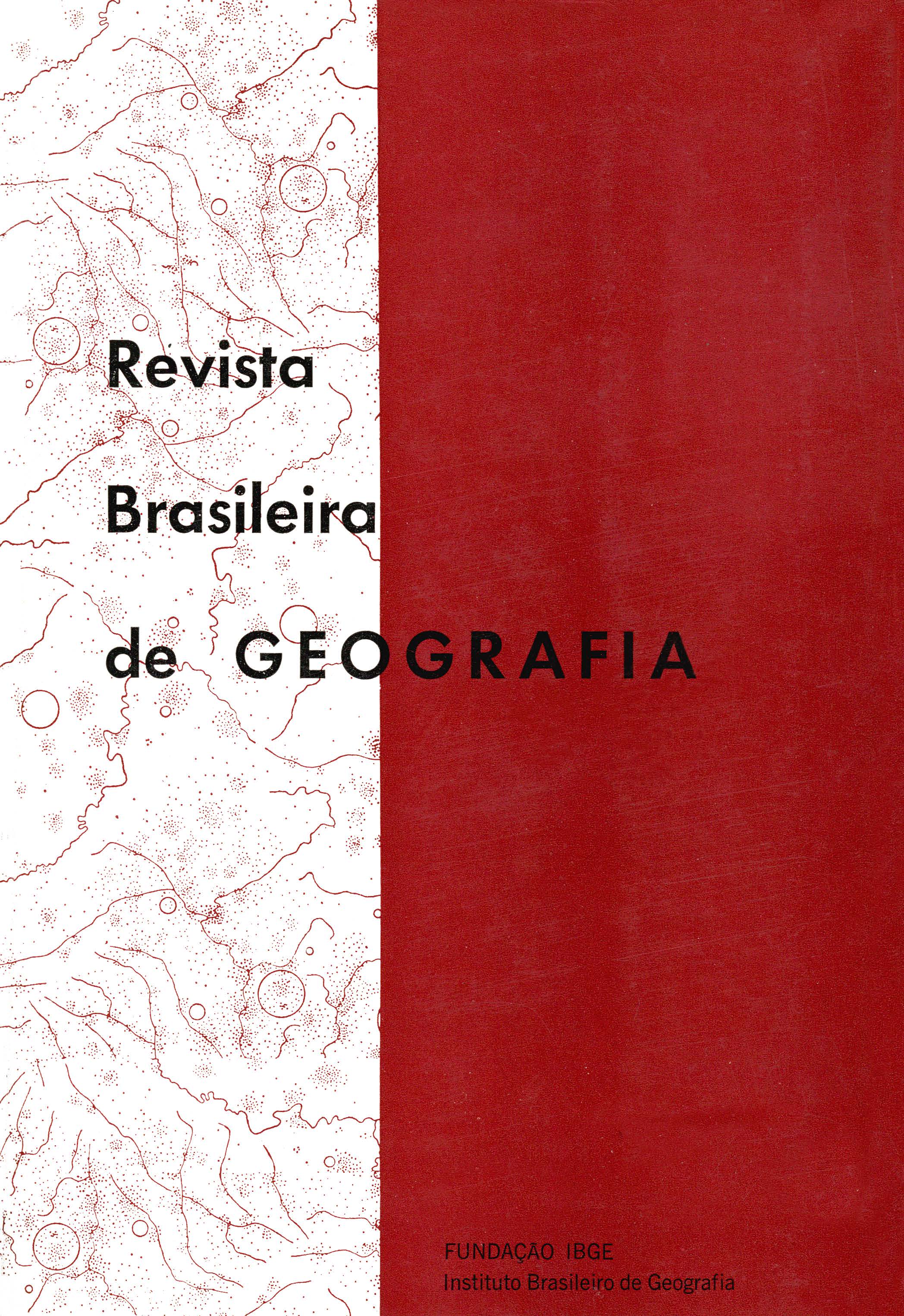Uma Análise geográfica da urbanização brasileira : serviços de infraestrutura nos principais centros urbanos do país
Keywords:
Urbanização, Geografia Urbana, Urbanization, Urban GeographyAbstract
Abstract:
The problem of the Brazilian urbanization, particularly in its spatial expression, is the chief preoccupation of this paper. The subject may be found in a broader study concerning Urban Agglomerations in Brazil, which has been developed in the Department of Geography of IBGE.
This paper can be divided into three major parts. The first one refers to theoretical considerations, based chiefly on a theoretical line of the urbanization - that of the collective means of consumption. According to Lojkine (1977), the urbanization in countries of advanced economy is a key element of the capitalist development, while the expansion of the collective means of consumption represents one of the basis of the urbanization, imposing itself as a factor of increase in work productivity. Implications of the process of development give place to an unequal distribution of the collective means of consumption in society, expressing itself in a spatial concentration of the resources.
Such a theoretical position served as a point of reference to the characterization o f the infrastructure services: electric light, sewer and water systems (variables in the Demographical census, at the level of particular urban permanent domicile per "município"). Concerning the collective means of consumption, they present common points. But in Brazil - not as in countries of advanced economy, whose applications are for grants - the pertinent public enterprises have been guided towards rentability, chiefly after 1964.
The second part refers to the spatial configuration of the mentioned. services. By means of the calculation of the mean, of the standard deviation and of the standardized scores to each variable, each of the unities of observation obtained marks from 1 to 9 - a fact that allowed to place them in 3 important categories:
1. Precarious Situations (1, 2 e 3)
2. Intermediate Situations ( 1, 2 e 3)
3. Favorable Situations (1, 2 e 3)
There is a total of 90 unities of observation determined in former works (Davidovich, Lima, 1975, 1976), comprehending metropolitan areas, urban agglomerations below this level, and "municípios" with towns of 50.000 inhabitants and with more inhabitants which are not included in the concentrations.
The spatial configuration concerns:
Interregional differentiation, related to the distribution of those services in the North/Northeast and in the Center South of the country;
Intrarregional differentiation - in the Northeast, for instance, the big urban concentration are favored with the implantation of the mentioned infrastructure, while, in the Southeast the unities above the metropolitan category occupy a superior position.
But the most favorable conditions of such an infrastructure refer to areas which include the national metropolises (São Paulo and. Rio de Janeiro) and the centers of their immediate region of influence - chiefly that of São Paulo - forming a "paulista standard".
At this part of the work, the hypotheses about the services have also been mentioned. They are related basically to factors which are capable to affect their spatial distribution: the intense demographic increase; the role of the industrial activity, which strengthens the economic basis of the centers and influences upon the decisions related to the preferential allocation of the public investments; and the income of the population, which shows the capacity to create resources and to attract investments.
The coefficients of correlation between these variables and those of the services confirmed only the last hypothesis. But a study of the same data at other spatial scales - not at the scale of the urban system as a whole - confirmed the other hypotheses.
The third part refers to final considerations. First, emphasis is given to an urban context, where public services are rare and tend to adapt themselves to the mechanisms of market. It is also emphasized that the unequal distribution of these collective equipments reflects a still limited performance of the State.
Second, some questions are raised concerning:
a) the possibility that the investments in public works constitute correctives measures of income distribution, in the quality of indirect salary. According to the Fundação Getúlio Vargas (RJ - 1979), the item Public Services increased 104,2% in the living cost, while the global index had a variation of 76%.
b) the comparison between the position of the centers in the collective services here analyzed and that in the monthly income of the urban PEA. Some observations were made, also aiming at the planning sphere.
c) the necessity of making relative the meaning of the Favorable Situations in the context of an underdeveloped country. There is a deep socio-spatial segregation in the major brazilian metropolitan areas at an intra-urban scale. In the paulista metropolis, an adequate infrastructure would require investments of Cr$ 700 millions against a fairly income of Cr$ 31 billions (1979).






